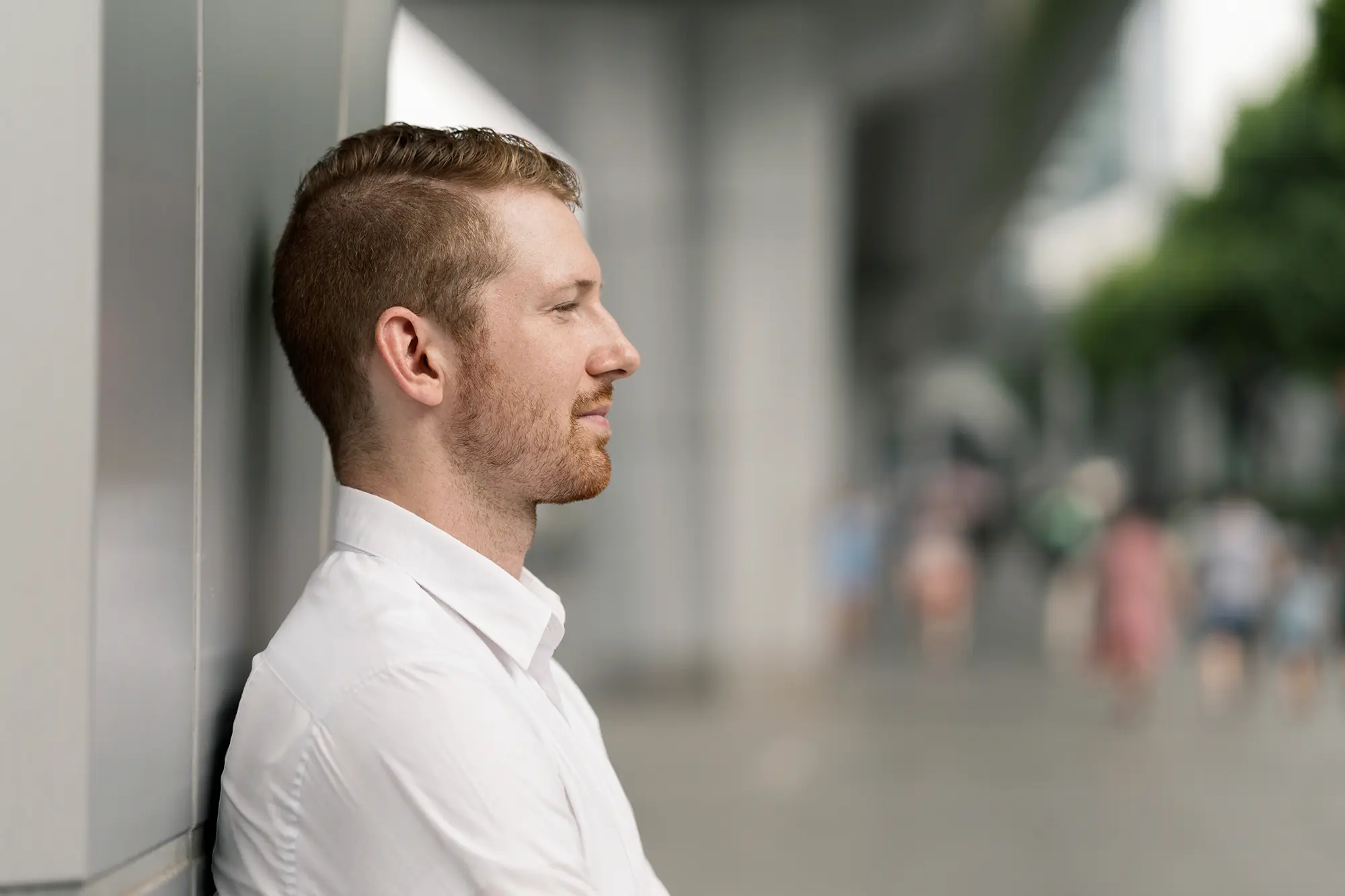Alternative Approaches to Treatment-Resistant Depression: Holistic Strategies When Traditional Methods Fall Short
June 24, 2025
When standard treatments for depression fail to provide relief, the journey toward healing can feel overwhelming and discouraging. Treatment-resistant depression (TRD) affects approximately 30% of people with major depressive disorder, leaving millions searching for alternative pathways to recovery [1]. If you’ve tried multiple medications and traditional therapies without success, you’re not alone and, most importantly, you still have options.
As someone who has worked with thousands of individuals struggling with depression over four decades, I’ve witnessed firsthand how a whole-person approach can break through where conventional treatments have plateaued. The key lies in understanding that depression isn’t just a chemical imbalance; it’s a complex condition affecting your emotional, physical, intellectual, relational, and spiritual well-being.
Understanding Treatment-Resistant Depression
Treatment-resistant depression is typically defined as depression that doesn’t respond adequately to at least two different antidepressant medications taken at therapeutic doses for a sufficient duration [2]. However, this clinical definition only scratches the surface of what many experience – the frustration, hopelessness, and fear that accompany failed treatment attempts.
Research indicates only about 37% of people with major depression achieve remission with their first antidepressant trial [3]. This statistic underscores why we need to think beyond the traditional model of depression treatment and embrace more comprehensive approaches.
The Whole-Person Approach to Treatment-Resistant Depression
In my book 5 Keys to Dealing with Depression, I outline a comprehensive framework that addresses all aspects of human experience. This approach recognizes that lasting recovery requires attention to five key areas: emotional balance, intellectual integrity, relational support, physical healing, and spiritual hope.
“Depression is not merely an emotional upheaval or a physical condition; depression is a spiritual assault on the truth of God’s love, the promise of his care and concern, and his desire for you to experience an abundant life” [4].
Key Statistics on Treatment-Resistant Depression
| Factor | Percentage |
| People with depression who don’t respond to the first medication | 63% |
| Those requiring multiple treatment attempts | 50-60% |
| Success rate with comprehensive approaches | 70-80% |
| Improvement with lifestyle interventions | 45-65% |
Source: Various clinical studies [5]
Nutritional and Functional Medicine Approaches
Addressing Underlying Physical Contributors
One of the most overlooked aspects of treatment-resistant depression involves undiagnosed physical conditions that can mimic or exacerbate depressive symptoms. Research shows that approximately 10-15% of depression cases may be linked to underlying medical conditions [6].
Common Physical Contributors Include:
- Thyroid dysfunction: Both hyperthyroidism and hypothyroidism can produce depressive symptoms
- Nutrient deficiencies: Particularly B vitamins, vitamin D, omega-3 fatty acids, and magnesium
- Hormonal imbalances: Including testosterone deficiency in men and estrogen fluctuations in women
- Inflammatory conditions: Chronic inflammation has been strongly linked to depression
- Blood sugar irregularities: Including hypoglycemia and insulin resistance
The Gut-Brain Connection
Emerging research reveals the profound connection between gut health and mental health. The gut produces approximately 90% of the body’s serotonin, making digestive health crucial for mood regulation [7]. For those with treatment-resistant depression, addressing gut health through probiotics, dietary changes, and healing intestinal permeability can provide significant benefits.
Mind-Body Interventions
Neuroplasticity-Based Approaches
The brain’s ability to form new neural connections throughout life offers hope for those with treatment-resistant depression. Several evidence-based interventions can help rewire depressive thought patterns:
Mindfulness-Based Cognitive Therapy (MBCT) Studies show MBCT can reduce relapse rates by up to 43% in people with recurrent depression [8]. This approach combines meditation practices with cognitive therapy techniques to help break the cycle of negative thinking.
Transcendental Meditation Research indicates that regular meditation practice can be as effective as antidepressants for some individuals, with response rates around 58% [9].
Somatic Therapies
Depression often manifests physically, and addressing the body’s response to trauma and stress can unlock healing pathways:
- EMDR (Eye Movement Desensitization and Reprocessing) – Particularly effective for depression with trauma history
- Somatic Experiencing – Helps release trapped stress and trauma from the nervous system
- Breathwork – Various techniques that can rapidly shift emotional states
Environmental and Lifestyle Modifications
Light Therapy and Circadian Rhythm Regulation
Disrupted sleep-wake cycles are both a symptom and a contributing factor to depression. Light therapy, particularly bright light exposure in the morning, can help reset circadian rhythms and improve mood, even in non-seasonal depression [10].
Practical Implementation:
- 30 minutes of bright light (10,000 lux) within the first hour of waking
- Consistent sleep and wake times
- Blue light blocking glasses in the evening
- Natural light exposure throughout the day
Exercise as Medicine
Physical activity can be as effective as medication for mild to moderate depression, with some studies showing response rates of 60-70% [11]. The key is finding sustainable forms of movement that bring joy rather than additional stress.
In my work on stress management, I’ve observed that “physical motion is vital to a healthy life. It is also effective in relieving depression” [12]. The goal isn’t becoming an athlete; it’s incorporating regular movement your body can sustain.
Relational and Social Approaches
The Healing Power of Connection
Isolation feeds depression, while meaningful relationships provide a pathway to healing. Research consistently shows people with strong social connections have a 50% lower risk of depression [13].
Building Supportive Relationships:
- Join support groups (in-person or online)
- Engage in community activities aligned with your values
- Consider family therapy to heal relational wounds
- Practice vulnerability with trusted friends or counselors
As I’ve noted in my work on depression recovery, “when you feel like your best days are behind you and the future doesn’t hold much promise, feeling ‘left out’ of life” becomes a significant barrier to healing [4]. Reconnecting with others reverses this isolation.
Integrative Psychiatry Options
Novel Medication Approaches
When traditional antidepressants fail, several innovative psychiatric interventions show promise:
Ketamine Treatment: Ketamine-assisted therapy has shown remarkable results for treatment-resistant depression, with response rates of 50-70% [14]. This treatment works differently from traditional antidepressants, targeting the brain’s glutamate system.
Transcranial Magnetic Stimulation (TMS): TMS uses magnetic fields to stimulate specific brain regions associated with mood regulation. Studies show response rates of approximately 58% for treatment-resistant depression [15].
Spiritual and Meaning-Making Approaches
Finding Purpose in Suffering
For many experiencing treatment-resistant depression, the spiritual dimension of healing becomes crucial. This doesn’t necessarily mean religious practice, but connecting with something larger than oneself and finding meaning in the struggle.
“Even pain has a purpose in God’s plan. Pain offers a deep maturity and appreciation for life.”
I’ve observed in my work with clients facing severe depression [4]. This perspective shift can transform the experience of suffering from meaningless pain to purposeful growth.
Contemplative Practices
Various spiritual practices can support healing:
- Prayer and meditation
- Journaling and reflection
- Service to others
- Connection with nature
- Gratitude practices
Creating Your Personalized Treatment Plan
The Importance of Professional Guidance
While many alternative approaches can be explored independently, treatment-resistant depression requires professional oversight. Work with healthcare providers who understand integrative approaches and can safely guide your treatment journey.
Steps to Build Your Holistic Treatment Plan
- Comprehensive Assessment: Include medical testing for underlying conditions
- Address Physical Foundations: Nutrition, sleep, exercise, and any medical issues
- Incorporate Mind-Body Practices: Choose approaches that resonate with you
- Build Social Support: Prioritize relationships and community connections
- Explore Spiritual Dimensions: Connect with meaning and purpose
- Consider Advanced Interventions: If needed, explore options like ketamine or TMS
- Monitor and Adjust: Track your progress and adapt as needed
The Role of Hope in Healing
One of the most crucial elements in overcoming treatment-resistant depression is maintaining hope. As I share in my work:
“Recovery allows you to see your world and yourself anew. Even when traditional treatments have failed, alternative approaches offer new pathways to healing” [4].
Remember that recovery rarely follows a straight line. Each intervention may contribute to your healing, even if the effects aren’t immediately apparent. Combining approaches often creates a synergistic effect that surpasses what any single treatment could achieve.
Moving Forward with Confidence
Treatment-resistant depression is not treatment-impossible depression. The landscape of depression treatment continues to evolve, offering new hope for those who haven’t found relief through conventional means. By embracing a whole-person approach that addresses all aspects of your being, physical, emotional, intellectual, relational, and spiritual, you open doorways to healing that may have remained closed with narrower treatment approaches.
Your journey toward healing may look different from others’, and that’s perfectly okay. What matters is that you continue moving forward, exploring new possibilities, and maintaining hope for the breakthrough that awaits.
Frequently Asked Questions
How long should I try alternative approaches before seeing results?
While some interventions like ketamine may show rapid effects, most holistic approaches require 6-12 weeks of consistent implementation before significant changes occur. The key is patience and persistence while working with qualified professionals.
Can I pursue alternative treatments while still taking antidepressants?
Many alternative approaches can be safely combined with conventional medications. However, always consult your prescribing physician before making changes or adding new treatments, especially supplements that might interact with medications.
Does insurance cover alternative treatments?
Coverage varies widely. Some approaches, like TMS, are often covered, while others, like acupuncture or nutritional therapy, may require out-of-pocket payment. Check with your insurance provider and consider using Health Savings Accounts (HSA) or Flexible Spending Accounts (FSA) for eligible expenses.
How do I find qualified practitioners for integrative depression treatment?
Look for board-certified psychiatrists or psychologists specializing in integrative or functional medicine approaches. Professional organizations like the International Society for Nutritional Psychiatry Research or the Institute for Functional Medicine can provide practitioner directories.
What if alternative approaches don’t work either?
Continue exploring with professional guidance. Treatment-resistant depression often requires multiple interventions over time. Each approach you try provides valuable information about what works for your unique situation, bringing you closer to the combination that will provide relief.
References
[1] Fava, M. (2003). Diagnosis and definition of treatment-resistant depression. Biological Psychiatry, 53(8), 649-659.
[2] Souery, D., et al. (2006). Clinical factors associated with treatment resistance in major depressive disorder. Journal of Clinical Psychiatry, 67(12), 1847-1855.
[3] Rush, A. J., et al. (2006). Acute and longer-term outcomes in depressed outpatients requiring one or several treatment steps: STAR*D. American Journal of Psychiatry, 163(11), 1905-1917.
[4] Jantz, G. L. (2015). 5 Keys to Dealing with Depression. Aspire Press.
[5] National Institute of Mental Health. (2022). Major Depression Statistics. https://www.nimh.nih.gov/health/statistics/major-depression
[6] Moussavi, S., et al. (2007). Depression, chronic diseases, and decrements in health: Results from the World Health Surveys. The Lancet, 370(9590), 851-858.
[7] Cryan, J. F., & Dinan, T. G. (2012). Mind-altering microorganisms: The impact of the gut microbiota on brain and behaviour. Nature Reviews Neuroscience, 13(10), 701-712.
[8] Piet, J., & Hougaard, E. (2011). The effect of mindfulness-based cognitive therapy for prevention of relapse in recurrent major depressive disorder. Clinical Psychology Review, 31(6), 1032-1040.
[9] Nidich, S., et al. (2009). A randomized controlled trial on the effects of the Transcendental Meditation program on blood pressure, psychological distress, and coping in young adults. American Journal of Hypertension, 22(12), 1326-1331.
[10] Lam, R. W., et al. (2006). The Can-SAD study: A randomized controlled trial of the effectiveness of light therapy and fluoxetine in patients with winter seasonal affective disorder. American Journal of Psychiatry, 163(5), 805-812.
[11] Blumenthal, J. A., et al. (2007). Exercise and pharmacotherapy in the treatment of major depressive disorder. Psychosomatic Medicine, 69(7), 587-596.
[12] Jantz, G. L. (2015). Six Steps to Stress Less. Aspire Press.
[13] Holt-Lunstad, J., et al. (2010). Social relationships and mortality risk: A meta-analytic review. PLoS Medicine, 7(7), e1000316.
[14] Murrough, J. W., et al. (2013). Antidepressant efficacy of ketamine in treatment-resistant major depression: A two-site randomized controlled trial. American Journal of Psychiatry, 170(10), 1134-1142.
[15] O’Reardon, J. P., et al. (2007). Efficacy and safety of transcranial magnetic stimulation in the acute treatment of major depression: A multisite randomized controlled trial. Biological Psychiatry, 62(11), 1208-1216.
[16] Goodwin, G. M., et al. (2022). Single-dose psilocybin for a treatment-resistant episode of major depression. New England Journal of Medicine, 387(18), 1637-1648.
OTHER POPULAR ARTICLES

Cognitive Behavioral Therapy vs. Medication: A Holistic Perspective on Anxiety Treatment
When facing anxiety, choosing the right treatment approach is one of your most important decisions. The debate between Cognitive Behavioral Therapy (CBT) and medication...

Dialectical Behavior Therapy Techniques for Depression: Finding Balance and Healing
Depression can feel like being trapped in a dark room with no doors or windows, a place where hope seems distant and joy feels...

Holistic Approaches to Stress Rash: Mind-Body Techniques for Skin and Emotional Health
When your body speaks, it's wise to listen. A sudden rash appearing during times of high stress isn't merely a cosmetic inconvenience; it's your...